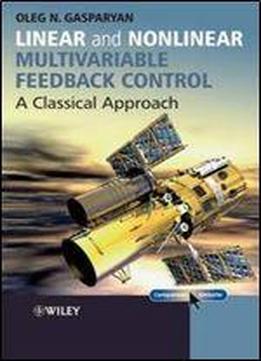
Linear And Nonlinear Multivariable Feedback Control: A Classical Approach
by Oleg Gasparyan /
2018 / English / PDF
6.8 MB Download
Automatic feedback control systems play crucial roles in manyfields, including manufacturing industries, communications, navaland space systems. At its simplest, a control system represents afeedback loop in which the difference between the ideal (input) andactual (output) signals is used to modify the behaviour of thesystem. Control systems are in our homes, computers, cars and toys.Basic control principles can also be found in areas such asmedicine, biology and economics, where feedback mechanisms are everpresent.
Linear and Nonlinear Multivariable Feedback Controlpresents a highly original, unified control theory of both linearand nonlinear multivariable (also known as multi-input multi-output(MIMO)) feedback systems as a straightforward extension ofclassical control theory. It shows how the classical engineeringmethods look in the multidimensional case and how practisingengineers or researchers can apply them to the analysis and designof linear and nonlinear MIMO systems.
This comprehensive book:
- uses a fresh approach, bridging the gap between classical andmodern, linear and nonlinear multivariable control theories
- includes vital nonlinear topics such as limit cycle predictionand forced oscillations analysis on the basis of the describingfunction method and absolute stability analysis by means ofthe primary classical frequency-domain criteria (e.g. Popov, circleor parabolic criteria)
- reinforces the main themes with practical worked examplessolved by a special MATLAB-based graphical user interface, as wellas with problems, questions and exercises on an accompanyingwebsite.
The approaches presented in Linear and NonlinearMultivariable Feedback Control form an invaluable resource forgraduate and undergraduate students studying multivariable feedbackcontrol as well as those studying classical or modern controltheories. The book also provides a useful reference forresearchers, experts and practitioners working in industry











